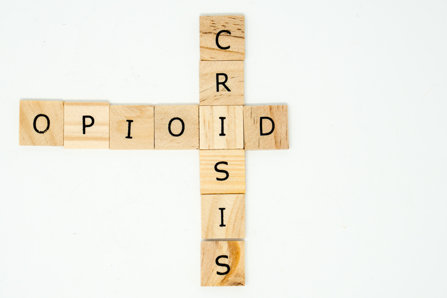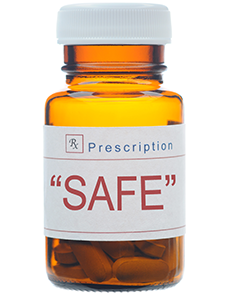The Opioid Update

Just about every day when I turn on the news, I see some update or media clip regarding the opioid addiction epidemic. Everywhere we look, opioid addiction disrupts our civilization and stains our communities with its toxic hold on millions of Americans.
Our country is in the midst of a crisis. It’s a health epidemic. The current federal administration even formally recognized the opioid crisis as a “National Public Health Emergency” as far back as August 2017. Yet still, the problem has carried on growing and is affecting more lives every year.
When we turn to the media for data on the opioid crisis, it’s easy to get overwhelmed by the information they present, much of which is designed more to create emotional responses in its viewers than to simply convey the facts. So in just a few minutes, let’s examine the opioid crisis for what it is, how it got to be this way, and how we might address it.
The Opioid Crisis—Facts and Data

I draw your attention to an important research paper published at Practical Pain Management. This is a medical journal which seeks to inform and advise physicians on sensible and conservative opioid-prescribing and pain-treatment practices. According to their writers, the Centers for Disease Control and Prevention labeled prescription opioid misuse and abuse in the United States as an epidemic in 2016. The CDC made this determination because, according to their research, about 3.8 million people were reported to having misused opioids in 2014.
The CDC was, and is, quite concerned about soaring statistics as pertains to opioid overdose deaths. According to their research, opioid overdose deaths increased by 450 percent from 1999 to 2014. And the epidemic has been expensive. The cost of remedying collateral damage from opioid use, medical expenses, law enforcement, treatment, incarceration, losses within the workforce, all adds up to tens of billions of dollars per year.
In spite of most of the media focusing in on truly tragic and yet very individual cases of destruction wrought by opioids, I was able to find one article recently published by CNN which did an excellent job of merely summarizing the opioid addiction epidemic. The article talks about what opioids are, how they create the effects that they create, how the opioid crisis developed, and so on.
The CNN article talks about how opioid pain-reliever drugs, while they were designed to relieve patients’ physical pain, have now instead become America’s favorite “feel good” drug. The article goes on to talk about how 49,098 of the 72,000 drug deaths in 2017 involved an opioid drug. Opioids are a big part—a majority part in fact—of the addiction crisis. More than 130 people die from opioid overdoses every day.
One thing I was pleased to see was that the CNN article talked about how the prescribing of opioids by doctors contributed immensely to the epidemic. Most major media sources tend to leave out this little detail. But it’s not a small detail. Excessive prescribing of opioids to patients who didn’t really need them in the first place is what created the opioid epidemic.
According to CNN, doctors dispensed 112 million prescriptions for opioids in 1992. They dispensed 282 million such prescriptions in 2012. Did the number of Americans who struggled with pain more than double in twenty years? Certainly not. But the medical field changed—strongly influenced by pharmaceutical companies.
A Brief History—How We Got to Where We Are Now

That revelation brings us to the next section: a brief history of how we got into this mess. A January 1980 letter entitled “Addiction Rare in Patients Treated with Narcotics” was released. Though it was not a legitimate medical study and though it left much to be desired in terms of canvassing large populations of patients (the letter referenced a particular, small population of hospitalized patients), this letter was yet cited as “proof” that narcotics were “safe” for the treatment of chronic pain.
1995 saw Purdue Pharmaceuticals releasing their iconic pain reliever drug OxyContin to the public. The drug was aggressively marketed, with Purdue using that 1980 letter in their marketing campaign as “proof” that their new painkiller was safe. Yet by 2007, Purdue Pharmaceuticals was facing criminal charges brought upon them by the federal government for the company’s misleading advertising about OxyContin. Purdue is still under legal investigation to this day, as are several other Big Pharma companies.
In 2010, the Food and Drug Administration approved “abuse-deterrent” versions of opioid pharmaceuticals. The hope was that pharmaceutical companies could redeem themselves by offering pain-relief pills that were more difficult to misuse.
By 2012, that plan had backfired entirely. Not only were the “abuse-deterrent” formulations still technically addictive, but their introduction led many addicts to seek out cheaper, easier, more potent highs from drugs like heroin and illicit fentanyl. Tens of thousands of people died shortly following the release of abuse-deterrents— precisely the opposite of what we were trying to accomplish.
In 2016 and 2017, first the CDC then the Trump Administration recognized the opioid situation as being a National Public Health Emergency. Yet not nearly enough effort was taken to do anything about it. Today, the opioid crisis has dipped slightly in terms of excessive prescribing of pharmaceutical opioids. Yet still, addicts are dying by the tens of thousands, now mainly from illicit opioids such as heroin, fentanyl and other synthetic opioids. We lost about 72,000 people in 2017 to drug overdoses—the highest recorded death toll yet.
Fighting Back against Opioid Addiction

While it is true that federal and state governments are taking more action on this issue than they were, this is a problem so vast that it will only diminish when we all take action to cut it back. Every American family needs to get educated on how to spot the signs and symptoms of prescription drug misuse, as that is often where the problem begins.
When we do know someone who struggles with opiate addiction, we must help them. Opioid addiction is toxic, dangerous, and lethal. It ends lives. An opiate addict is one whose days are numbered unless he finds treatment and gets help for his crisis. The best way to help anyone who struggles with such a habit is with the assistance of a residential drug treatment center.
And last but not least, we have to hold pharmaceutical companies responsible for the hand they played in creating the opioid crisis. We have to demand better medical care, pain relief options that are not so dangerous and potentially lethal. We have to do all these things. No government or higher institution is going to create this change for us.
Sources:
- https://www.nbcnews.com/feature/long-story-short/video/trump-declares-opioid-epidemic-a-national-emergency-1022038083627
- https://www.practicalpainmanagement.com/treatments/pharmacological/opioids/demystifying-opioid-abuse-deterrent-technologies
- https://www.cnn.com/2017/09/18/health/opioid-crisis-fast-facts/index.html
- https://www.cnn.com/2017/06/01/health/opioid-epidemic-1980-letter-origins-study/index.html


 ®
®